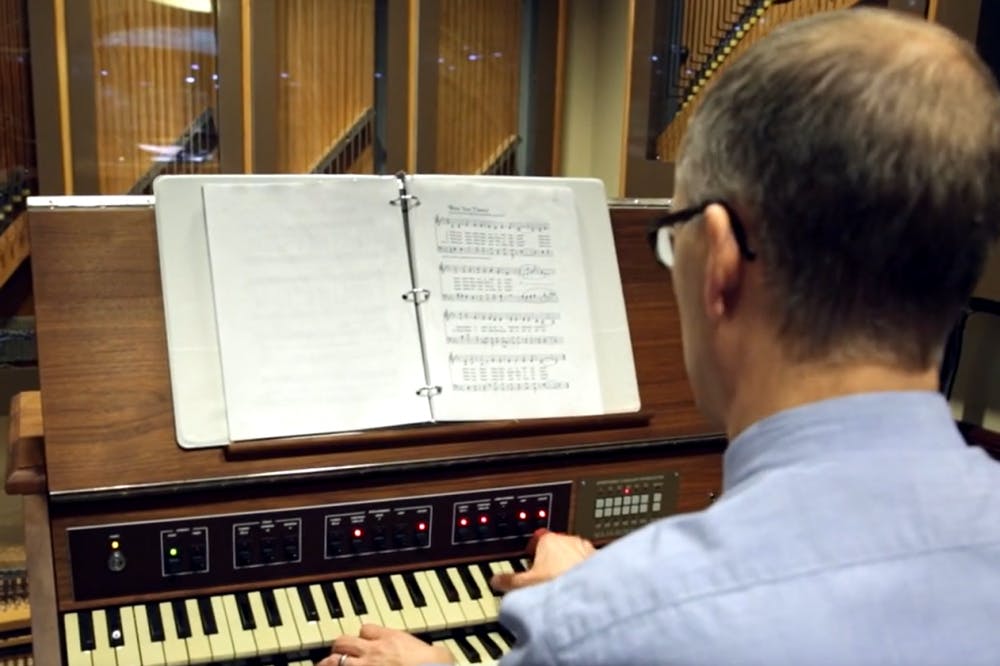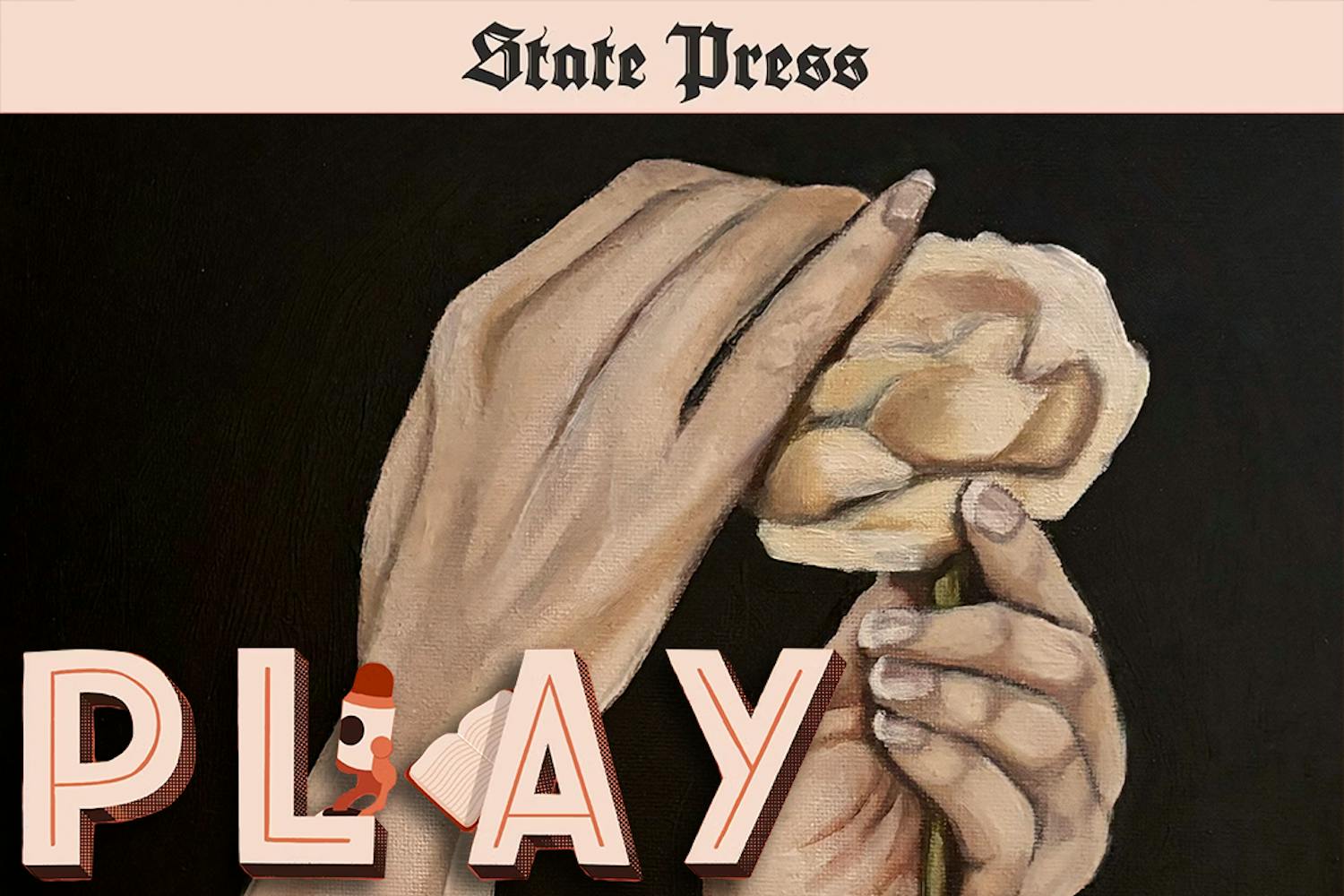Have you ever been walking past Tempe's Memorial Union and been surprised to hear melodious bells ringing in the hour? You're not alone— from 9 a.m. to 8 p.m. every day on the hour (except for noon), students are treated to the Westminster Chimes live from ASU's best kept secret: the historic carillon housed in the basement of Old Main. If you're lucky enough to be around at 5 p.m., you even get a 20-minute concert, which features the ASU Fight Song and various other pre-recorded songs.
So what is a carillon, and why do we get the pleasure of having it announce the time change to us?
The carillon looks like an electric keyboard, but the keys are connected to 258 bells that sound when a key is struck. You can see for yourself and have a little fun playing a simple, virtual carillon here.
The sound of the bell is then carried via electronic impulse to speakers on the Memorial Union and the Durham Language and Literature building. This unique instrument found its way to campus after the Associated Students of ASU donated it in 1966 to honor students, faculty and staff who died in military service.
The carillon never found a permanent home and bounced around from place to place after its donation, languishing in storage for nearly 30 years before Carl Cross and Judith Smith, founders of the ASU Carillon Society, tracked it down in 2002.
The instrument still contained all its original bells and parts (with a little added dust). After undergoing some clean-up and refurbishment, the carillon lived in the Zuni room of the Memorial Union from 2005 onward before being displaced — and narrowly avoiding destruction — by the devastating 2007 fire. Finally, in 2009, the instrument found its permanent home in the basement of Old Main.
"Old Main is the oldest building on the Tempe campus ... it's concerned with tradition," Cross said. "The carillon is a piece of ASU history, so we think this is a great place for its permanent home."
The carillon does far more than just chime the time and lounge around in storage, however. The carillon is also used for weddings, ROTC training exercises and a variety of other events the Carillon Society holds throughout the school year. These events include hymn sing-a-longs, holiday concerts, concerts to honor veterans (in keeping with its military ties) and student carillonneur concerts, with the first Fall Hymn Sing-a-long of the semester approaching on Oct. 21.
There are also scholarships associated with the instrument. The Robert X. La Pat Composition Competition offers a $250 cash prize and the inclusion of the winner's work on a CD for students who submit an original composition for the carillon. The deadline for the composition competition is Tuesday, March 14, 2017.
The OneAZ Credit Union also offers a student carillonneur scholarship to the tune of $500 to an ASU undergraduate student who will study the instrument and play at two concerts and various events throughout the year. The deadline was Oct. 7, and there was only one applicant this year due to the relevant secrecy of the carillon.
ASU Carillon Society co-chair Judith Smith wants to change the fact that the carillon is virtually unknown.
"We want people to play it," she said. "Just plunk a few keys and I can make you an honorary carillonneur — I'll send a certificate and everything!"
Smith is the one who actually tracked the carillon down when it was in storage and is the biggest proponent of the instrument. A lifelong musician herself, she spoke highly of the positive effects of music on campus. She said that the carillon adds more character to campus and builds community and also echoed Cross's sentiment that the carillon is an important part of ASU tradition.
"The carillon events are a unique experience ... there's nothing more wonderful, refreshing or uplifting than getting together to sing," she said. "And you don't have to stay the whole time at our events ... you can come for only ten minutes. Just come."
Kevin Snow has been on campus as a student and employee for 28 years, and has been a carillonneur since 2006. He plays for concerts, hymn sing-a-longs and has even composed some original music for the instrument.
"You don’t have to know anything about music — if you can push a key down, you can play the thing," he chimed in.
Snow said he finds a lot of satisfaction in playing the bells and even feels relaxed when he hears them ring. Snow is of the opinion that the carillon is vital to not only ASU tradition but also a broader tradition of schools on the East Coast and in Europe that have carillons.
Snow said he thinks exposing students to music makes for a more well-rounded campus and unifies the University, no matter the student's major or background.
"The more music that is out there, the more it makes for a better world," Snow said. "And we'd like to start right here at home."
Want to find out how you can help the carillon chime on, play it yourself or just learn more information about scholarships or events? Contact Smith and Cross at carillon@asu.edu to set up an appointment to play it or visit the ASU Symphonic Carillon page for more information.
Reach the reporter at cagoldin@asu.edu or follow @auruming on Twitter.
Like The State Press on Facebook and follow @statepress on Twitter.





